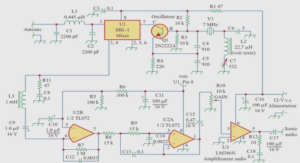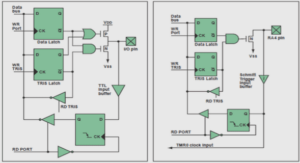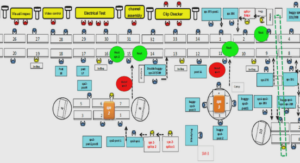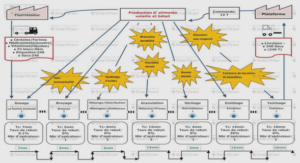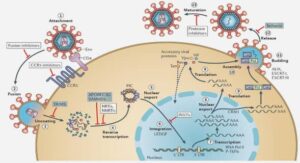Modern volcanology explores all aspects of volcanic eruptions, and processes occurring on micron to kilometre scales. One of the most important micro-scale processes is the formation and development of bubbles in magmas, which can have a major effect on the explosivity and progress of volcanic eruptions (Hurwitz and Navon, 1994; Mangan and Sisson, 2000). The solubility of volatiles, the nucleation of bubbles and the efficiency of volatile transfer from melt to bubble control a magma’s degassing efficiency (Gardner et al., 1999). The nucleation, growth and coalescence of bubbles can lead to the subsequent fragmentation of the magmatic foam or the formation of deep-rooted permeable paths and so govern volcanic eruption styles (Giachetti et al., 2010). One branch of volcanology aims to interpret all bubble-related processes in order to constrain and understand the conditions under which a volcano could erupt violently and thus help monitor and diminish eruption hazards. Most studies focus on natural volcanic rock textures that contain information on the processes of degassing and crystallization (e.g. Cichy et al., 2011). Experimental petrology can also be used to explore these same processes, with the added benefit of controlling pressure, temperature and compositions. The goal is to create samples that mimic natural environments under known and narrow conditions and to combat textural overprinting in post-process samples. In melts, bubbles are displaced more easily than other phases (e.g. crystals), so textural overprinting is especially problematic in bubble related studies (e.g. Shea et al., 2010).
A bubble is defined as a droplet of one substance surrounded by another, usually a gas in a liquid (Clift et al., 1978). When, due to change in pressure and temperature conditions, volatile solubility in magma decreases, supersaturation ensues, and the volatile components segregate into gas bubbles. Although natural systems contain many different volatile species, such as H2O, CO2, S, F, Cl, most studies have focused on H2O since its concentration in magmas is several orders of magnitude greater than that of other volatiles.
The focus of this research has been the experimental formation of H2O gas bubbles within magmas of andesitic composition, in order to study their interactions with crystals (pre-existing or newly formed) of different compositions. Interactions here encompass heterogeneous nucleation (nucleation on a pre-existing surface) of bubble on crystals, heterogeneous nucleation of crystals on bubbles, their detachment and attachment.
What is the influence of crystals on bubbles in magmas?
Bubble nucleation
Bubble nucleation is strongly dependent on the content of volatiles in the melt, the decompression rate, temperature and surface tension (Hirth et al., 1970; Shea, 2017 and references therein). Henceforth, I will restrict discussion to the case of water vapour bubbles in magmas, as this is the focus of this thesis. Classical nucleation theory states that because of local fluctuations in the concentration of molecular water in the melt, small clusters (critical sized nuclei) of water molecules form, which can grow or shrink depending on the addition or loss of new molecules by diffusion (Volmer and Webber, 1926; Blander and Katz, 1975). Once a critical nucleus has formed, the addition of water causes a lowering of its free energy with respect to the surrounding melt – a spherical shape of the critical nucleus is assumed as it would represent the minimum amount of energy needed for the formation of the interface (Dunning, 1969; Landau and Lifshitz, 1980; Hurwitz and Navon, 1994).
Bubbles can nucleate in two different ways: homogeneous nucleation, which occurs completely within the melt and requires higher degrees of volatile supersaturation, and heterogeneous nucleation, nucleation on a crystal surface, which requires lower volatile supersaturations (Blander and Katz, 1975; Gardner, 2007; Hurwitz and Navon, 1994).
As heterogeneous bubble nucleation necessitates phase surfaces, an important constraint on the nucleation style is the presence or absence of crystals in the melt. Crystals represent regions of heterogeneity in the magma and crystal features, such as composition, crystal lattice type, morphology, surface energy of their faces and defects in structure (tips, cracks, cavities, impurities or any mechanical damage) are important parameters that could influence their interactions with bubbles. Imperfections on a crystal surface are the most efficient nucleation sites because they are poorly wetted by e melt and have the greatest tendency to entrap gas (Cole, 1974). Crystal defects promote surface roughness, in turn promoting heterogeneous bubble nucleation (Volmer, 1939; Zanotto and Fokin, 2003). However, not all crystals are alike: some are regarded as efficient nucleation sites and their presence or absence can influence bubble nucleation type, whereas others are commonly regarded as inefficient and hence unfavorable for bubble formation (Hurwitz and Navon, 1994).
Hurwitz and Navon (1994) and Gardner and Denis (2004) have considered the relations between the chemical composition of minerals, their crystal morphology and surface properties, and how these can affect heterogeneous bubble nucleation. Although heterogeneous bubble nucleation is always easier than homogeneous nucleation, crystals of different minerals are not equally efficient as bubble nucleation sites. Each mineral is defined by its composition and geometry of crystal lattice, and thus each has a different surface energy value. The efficiency in bubble nucleation arises from the crystals’ ability to be easily wetted by a vapour phase, i.e., to form a large dihedral contact angle between the bubble and itself (the wetting angle, Hurwitz and Navon, 1994). The surface energy value (σSV) is reflected in the outer contact angle – the lower the surface energy the larger the outer contact angle, and along with crystal morphology is the controlling parameter for a minerals’ bubble nucleation efficiency (Hurwitz and Navon, 1994). Due to sparse studies on the subject, the true values of surface energies between crystals and bubbles (σSV) remain mostly unknown.
In the studies of Hurwitz and Navon (1994) and Gardner and Denis (2004) feldspars and quartz were never wetted (bubbles were not found on their surfaces but in their vicinity). Plagioclase proved to be inefficient at bubble nucleation, even at Δpdec= 150 MPa, due to its very high σSV (Gardner and Denis, 2004), much higher than for magnetite and hematite, and very low wetting angle < 20º (Hurwitz and Navon, 1994). Gualda and Anderson (2007) were able to measure outer contact angles in 2D at different minerals and confirmed this: for magnetite is θ ≈ 45° – 50°, and for plagioclase is θ ≈ 5° – 25°.
The inefficiency of silicate crystals was attributed to their compositional similarity to silicate melts. The energy at an interface separating crystals and melt is dependent on the structure and the type of bonding of each phase. If the structure and bonding are similar, as with a silicate mineral in a silicate melt, the ionic charge at their interface is low, hence the interfacial energy is low, and silicates are well wetted by silicate melts. If there is a compositional and bonding difference, as with an oxide mineral in a silicate melt, the ionic charge at the interface is high, the interfacial energy is high, so oxides are poorly wetted by silicate melts . In turn, good wettability of a crystal by a melt leads to poor wettability of the crystal by a bubble, and vice versa.
CHAPTER 1 Introduction, Hypotheses, Objectives, Methodology |

